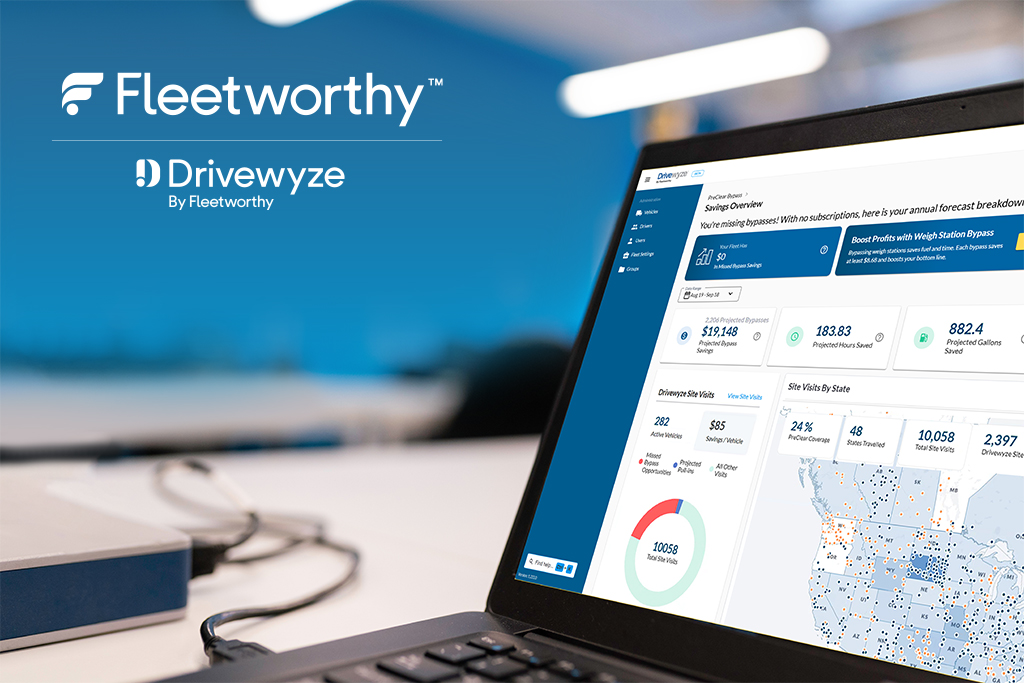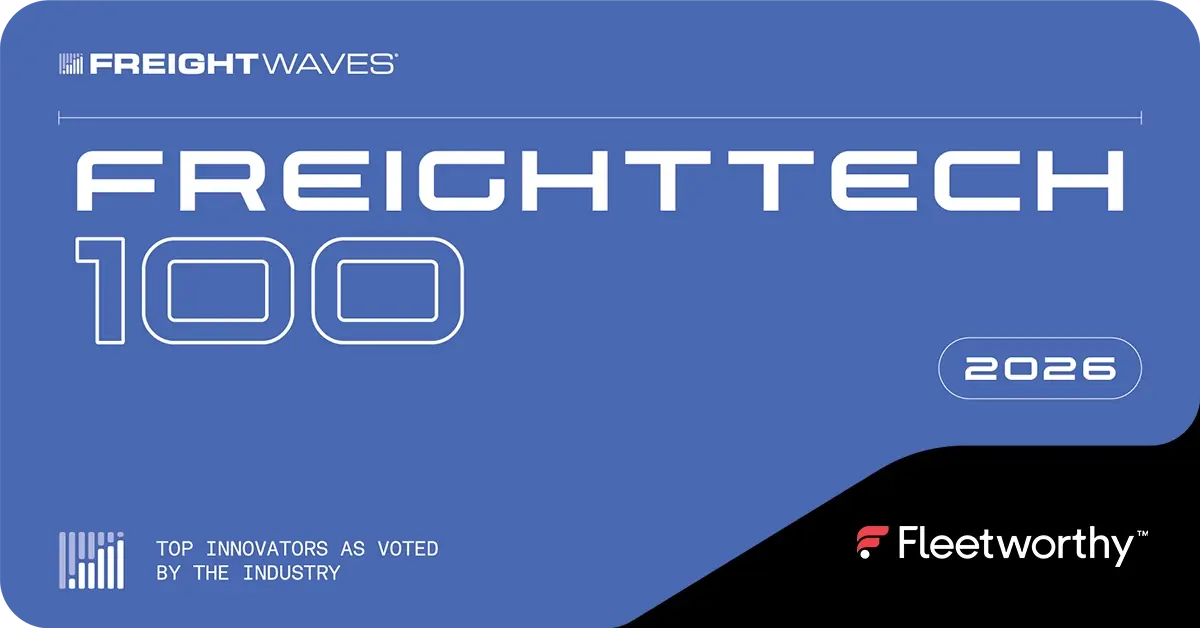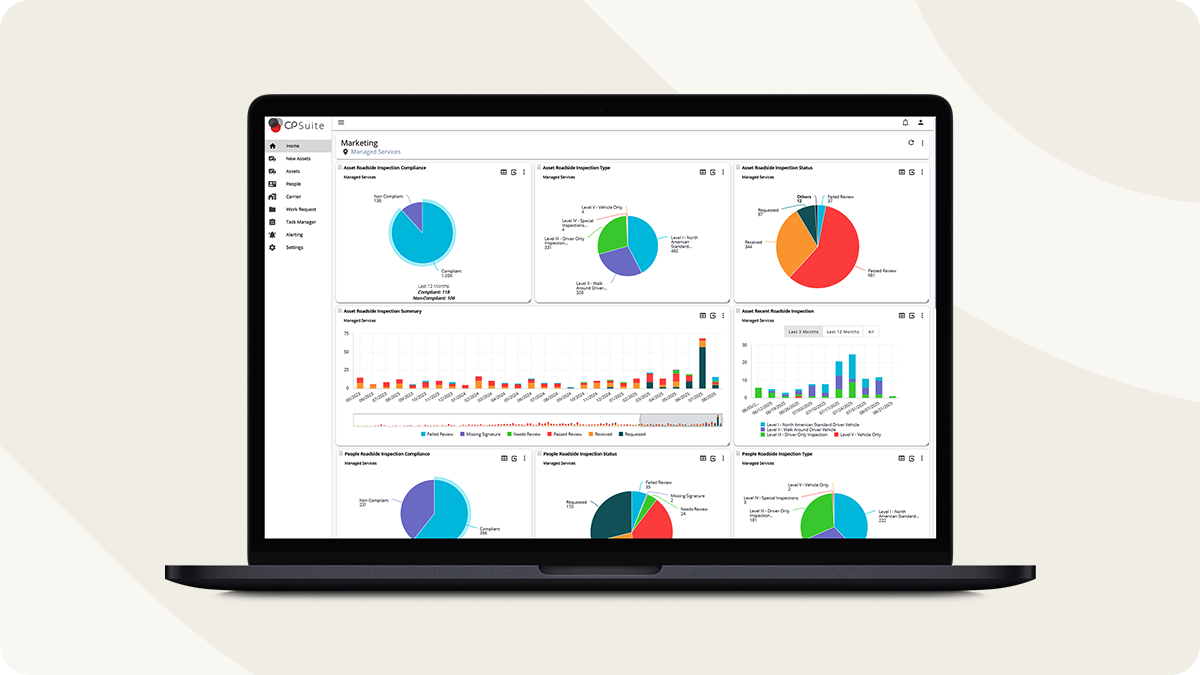The Federal Motor Carrier Safety Administration (FMCSA) Portal is a centralized online platform that offers seamless access to FMCSA systems and databases, simplifying critical tasks like data management, compliance reporting, and monitoring fleet operations.
Key Functions and User Benefits:
- Streamlined Access: The FMCSA Portal provides a unified entry point for motor carriers, commercial drivers, and service providers to access vital systems and services without navigating multiple platforms.
- Comprehensive Integration: It integrates with various transportation systems, ensuring data consistency and enabling users to stay aligned with federal and state regulatory requirements.
- Data-Driven Insights: Real-time data management empowers transportation professionals to respond quickly to compliance concerns, enhancing safety and operational readiness.
The FMCSA Portal is an invaluable resource, providing the tools necessary to centralize and simplify the complex web of regulatory requirements faced by the industry.
Recent Updates to the FMCSA Portal and Their Impact
In its commitment to staying ahead of the curve, FMCSA has introduced a series of updates to the Portal, significantly enhancing its functionality and user experience. These improvements are critical to maintaining alignment with the ever-evolving demands of the transportation industry and regulatory landscape.
Highlights of the Latest Updates:
- Improved User Interface: A cleaner, more intuitive interface makes it easier for users to navigate the Portal and complete tasks efficiently.
- Enhanced Security Features: Strengthened data protection measures ensure user data remains secure while adhering to stringent compliance standards.
- Mobile-Responsive Design: The Portal’s new mobile-friendly capabilities allow users to access key tools and information on-the-go, a critical feature for busy transportation professionals.
- Automated Alerts and Notifications: Users can now receive real-time updates and reminders, reducing the likelihood of missed deadlines or overlooked compliance requirements.
By offering centralized access to FMCSA systems, the Portal plays a vital role in ensuring that motor carriers and drivers stay compliant with federal safety standards while minimizing administrative overhead.
Accessing the FMCSA Portal: Preliminary Compliance Steps
One of the initial requirements for accessing the FMCSA Portal is enrolling in a consortium for drug and alcohol testing. A consortium is a collective group that manages drug and alcohol testing programs on behalf of multiple employers, ensuring compliance with FMCSA regulations. This step streamlines the testing process and ensures that motor carriers meet the FMCSA’s rigorous safety standards.
Key Aspects of Consortium Enrollment:
- Mandatory Participation: Motor carriers must join a consortium that fulfills FMCSA’s requirements for drug and alcohol testing.
- Random Testing Compliance: The consortium is responsible for conducting random drug and alcohol tests in line with FMCSA mandates.
- Pre-Portal Registration Requirement: Consortium enrollment must be finalized before carriers can register for or access the FMCSA Portal.
By enrolling in a consortium, motor carriers can efficiently manage their compliance responsibilities. The consortium ensures that testing procedures are consistent, effective, and fully compliant with FMCSA guidelines.
DOT Drug and Alcohol Program Requirements
In addition to consortium enrollment, carriers must comply with the DOT Drug and Alcohol Program requirements. This program establishes strict regulations for drug and alcohol testing to promote safety on the road. Compliance with these requirements is not only a legal obligation but also a critical step toward maintaining a safe and reliable fleet.
Key Steps to Ensure Compliance:
- Policy Implementation: Motor carriers must develop and implement a comprehensive drug and alcohol testing policy that meets DOT standards.
- Mandatory Testing: Testing must include pre-employment, random, reasonable suspicion, post-accident, return-to-duty, and follow-up testing.
- Adherence to DOT Standards: All testing procedures must comply with DOT guidelines to ensure validity, reliability, and consistency.
The DOT Drug and Alcohol Program is designed to proactively address potential substance abuse issues among commercial drivers, enhancing both public safety and operational integrity. This program sets the foundation for safe, compliant transportation practices.
Understanding the USDOT Number and FMCSA Registration
The USDOT number is more than just an administrative requirement. It serves as the primary identifier for entities transporting cargo or passengers, enabling the FMCSA to monitor safety practices, conduct audits, and oversee compliance reviews and inspections. This number reflects an organization’s commitment to meeting the highest safety and regulatory standards.
Key Purposes of the USDOT Number:
- Tracks safety performance and compliance history.
- Serves as the foundation for FMCSA audits, roadside inspections, and compliance reviews.
- Identifies carriers and operators in FMCSA’s national database.
Without a USDOT number, entities cannot legally engage in most commercial transportation activities, making its acquisition an essential first step.
Steps for FMCSA Portal Registration and USDOT Number Acquisition
To ensure a smooth registration process, carriers should prepare in advance, gathering all necessary documentation and reviewing FMCSA requirements. Below is a step-by-step guide to navigating FMCSA Portal registration and acquiring a USDOT number:
- Verify Entity Eligibility:
- Review FMCSA requirements to determine whether your operation requires a USDOT number. Operations involved in interstate commerce or transporting hazardous materials must register.
- Review FMCSA requirements to determine whether your operation requires a USDOT number. Operations involved in interstate commerce or transporting hazardous materials must register.
- Prepare Required Information:
- Gather essential details, including business name, address, and type of operation (passenger, cargo, hazardous materials, etc.).
- Have safety compliance data and proof of insurance readily available.
- Complete the Application via URS:
- Use the Unified Registration System (URS) on the FMCSA Portal to submit Form MCSA-1, which is the official application for obtaining a USDOT number.
- Double-check all entered information for accuracy to avoid delays in processing.
- Submit Supporting Documents:
- Provide proof of insurance, business registration, and safety program details as required by FMCSA regulations.
- If applicable, include documentation related to hazardous materials transport or specific operational certifications.
- Approval Process:
- After submission, FMCSA evaluates the application. Approval timelines vary depending on the complexity of the operation and the completeness of the submission.
- Plan ahead to allow time for evaluation, especially if operational deadlines are approaching.
- Receive and Display USDOT Number:
- Once approved, your USDOT number will be assigned. This number must be prominently displayed on all commercial vehicles operated by your entity, adhering to FMCSA guidelines.
Maintaining Compliance Post-Registration
Obtaining a USDOT number is only the beginning. Ongoing compliance is crucial to avoid penalties, fines, or potential disruptions to operations. Key post-registration steps include:
- Regular Updates: Update your FMCSA profile whenever there are changes to your business operations, such as address, contact details, or fleet size.
- Annual Compliance Requirements: File mandatory reports and renewals, including Unified Carrier Registration (UCR) filings.
- Adhere to FMCSA Safety Standards: Maintain safety protocols for driver qualifications, hours of service (HOS), and vehicle maintenance.
- Prepare for Audits and Inspections: Ensure all documentation, including logs and maintenance records, is readily available for review during audits or inspections.
Navigating the FMCSA Portal and successfully obtaining a USDOT number lays the groundwork for legal and compliant operations in the transportation industry. The process, facilitated by the Unified Registration System, requires careful attention to detail and thorough documentation. Once registered, maintaining compliance is just as critical as the initial application process, ensuring uninterrupted operations and adherence to FMCSA standards.
Utilizing FMCSA Portal Tools for Enhanced Compliance and Safety
The FMCSA Portal is equipped with robust tools tailored to meet the unique challenges of fleet management. These tools are designed to assist carriers in maintaining compliance with federal regulations, identifying potential safety concerns, and ensuring operational efficiency. Whether monitoring driver qualifications or tracking vehicle maintenance, the FMCSA Portal serves as a one-stop solution for proactive fleet management.
Key Tools and Their Benefits:
- Compliance Tracking: Stay ahead of federal regulations by using the Portal to monitor compliance status in real-time. This feature allows carriers to quickly identify and address any gaps in compliance, reducing the risk of costly fines or operational disruptions.
- Safety Measurement System (SMS): The SMS tool analyzes data from roadside inspections, crash reports, and investigation results to highlight safety trends and pinpoint areas of concern. By leveraging this data, carriers can proactively address safety issues and improve their CSA (Compliance, Safety, Accountability) scores.
- Driver Qualification File Management: Managing driver qualification files is critical to ensuring all drivers meet FMCSA regulatory requirements. The Portal simplifies this process, enabling fleet managers to track certifications, medical cards, and other essential documents in one centralized location.
- Vehicle Maintenance Records: A well-maintained fleet is key to safety and compliance. The FMCSA Portal provides carriers with a platform to organize and access vehicle maintenance records, ensuring that inspections, repairs, and preventative maintenance are conducted on schedule.
- Hours of Service Compliance Support: The Portal supports carriers in monitoring Hours of Service compliance, helping to avoid violations that can result in penalties or impact safety performance. Integration with electronic logging devices (ELDs) ensures accurate and reliable data reporting.
The FMCSA Portal provides a comprehensive set of tools that address the critical needs of fleet management. Its benefits extend beyond simple compliance tracking, offering carriers a strategic advantage in fostering a culture of safety and efficiency across their operations.
Fleetworthy vs. FMCSA Portal: Do You Need Both?
- Fleetworthy Simplifies Compliance, but the FMCSA Portal Is Still Required
- Fleetworthy provides a streamlined, proactive compliance solution that helps fleets stay ahead of FMCSA regulations.
- However, the FMCSA Portal is still necessary for official registration, obtaining a USDOT number, submitting compliance reports, and accessing federal safety data.
- Even if a company uses Fleetworthy, they still need to register and maintain an FMCSA Portal account to meet federal requirements.
2. Fleetworthy Automates & Enhances What the FMCSA Portal Provides
- The FMCSA Portal primarily serves as a database and regulatory hub, meaning users must manually check reports, manage records, and ensure compliance on their own.
- Fleetworthy integrates with FMCSA data but offers automated compliance tracking, proactive alerts, and expert guidance to prevent compliance violations before they happen.
- Instead of manually checking the FMCSA Portal for upcoming deadlines, Fleetworthy users receive alerts and updates to stay compliant effortlessly.
3. Fleetworthy Reduces Admin Work, While FMCSA Portal Is for Official Federal Access
- Fleetworthy helps consolidate compliance records, track vehicle maintenance, and manage driver qualification files in a single, user-friendly platform.
- The FMCSA Portal still serves as the official gateway to FMCSA audits, safety performance records, and registration systems.
- By using Fleetworthy, fleets reduce the burden of manual recordkeeping and compliance tracking, ensuring they meet FMCSA regulations without constantly checking the FMCSA Portal.
Navigate Compliance with Confidence
Are you ready to enhance the operational excellence of your transportation business and navigate compliance with confidence? Fleetworthy is your ideal partner. Our comprehensive services not only align with the FMCSA Portal’s objectives but expand upon them to offer unparalleled support for your fleet.
Whether you’re seeking to optimize your vehicle safety and compliance, manage driver safety protocols, or streamline toll and weigh station processes, Fleetworthy provides the expertise to ensure every aspect of your fleet operations exceeds industry standards.
Take the first step towards transforming your transportation business into a model of efficiency and regulatory compliance. Unlock the full potential of your fleet – partner with Fleetworthy today for effortless compliance.




